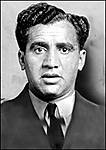Quoted Text
And Bill, apart from no Octopus on other vehicles, here's another one to ponder, have you seen any Disc-camouflage on a Tiger-B or E? Or a Pz III or IV? You also know that it is possible to identify which company did final assembly of a Panther by it's camouflage pattern, such as the diagonal scheme is DB. And the Zimmerit patterns, that too is a clear pointer to what plant the vehicle comes from.
Point of the matter, even though an order is given, it is clearly to see, that this does not mean that each and every plant implements that order EXACTLY the same as any other plant. Zimmerit was applied differently, camouflage schemes were applied differently, heck, with the Panther, even parts were used in different ways between plants like no chinned mantlets from MNH, last steel wheel from MAN to give 2 examples.
That no other vehicle is showing up in photographs(!!) with Octopus doesn't mean it WAS NOT the new camo-scheme.
But, if it is that I am not interpreting this all correct, than what was the reason for this one single weird Tiger-B? End of the war frollicks? Painters getting giddy with brushes, intoxicated by wine and paintfumes? Just kidding, but really, what explanation can there be for such a scheme to be put on just one single vehicle if not for the fact is was ordered so?
Bill I think Herbert's post was maybe aimed at me, soooo ok, here I go again

, though I will say this will be my last post on this subject, as I'm sure many are tired of reading about it, and Herbert hasn't said anything to convince me to change my mind, and the same goes the other way.
Herbert while I agree with a good bit of what you say, I think bringing up disc camo is pointless. You're right, it was never seen on any Tiger version so why raise the subject here? Yes, I know all about the different camo schemes on Panthers, as well as the different zim applications and how these are related to the different factories, I have "Duel In the Mist" and the "Panzer Tracts" series also. But again I see very little correlation here, Panthers were built in three separate factories, hence many of the small differences. The Tiger II was assembled in one factory (and by that I mean final assembly, I'm well aware that many components were manufactured elsewhere and shipped). So if the "octo" was to be the "official" new scheme and the order was given in January, why are there no more documented cases coming from the one factory?
Finally, in response to your last paragraph above, as I've said elsewhere in this thread, I believe that may have been almost precisely what happened. Not that the workers or crew were having some fun (or frollicking

), but they were in a hurry and this was what they had time for. The "suckers" were obviously done hastily and a variation on the "ambush" spots, as is the rest of the scheme (done quickly that is). I think it was an attempt to get some paint on just to break up the shape of the tank, nothing else.
To the other guys out there still following this discussion, once again I encourage you to read the available material, examine the pics, and make up your own minds.
Cheers guys,
Mike (not Bill

)















































